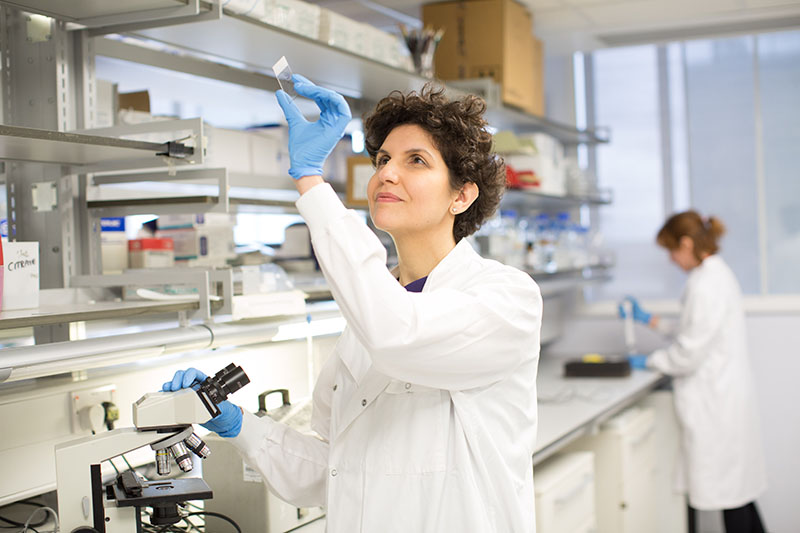Home » ‘Printing’ a safe haven for beta cells – senior research fellowship project
‘Printing’ a safe haven for beta cells
Dr Victoria Salem’s Senior Research Fellowship project
Home »
Dr Victoria Salem’s Senior Research Fellowship project

Dr Victoria Salem is a Clinical Senior Lecturer in Diabetes and Endocrinology at Imperial College London. She researches the islets in the pancreas, which is where insulin-producing beta cells and other hormone-producing cells are located. The aim of her Grand Challenge project is to develop a device that can be implanted into people with type 1 diabetes to deliver a new supply of beta cells.
Finding an effective way to replace damaged and destroyed beta cells with healthy, functional beta cells is critical to curing type 1 diabetes. One way of making new beta cells is to grow them in a lab from stem cells, a type of cell which can develop into any other cell type. Trials are ongoing in the US to transplant these lab-grown beta cells into people with type 1. But these patients must take drugs called immunosuppressants (which can have serious side effects) to stop their immune systems attacking these new beta cells.
To overcome the need for immunosuppressants, Vicky plans to hide her lab-grown beta cells inside a soft, jelly-like case. Beta cells need an extensive blood supply to provide them with the oxygen and nutrients they need. So, Vicky needs to create a system that allows nutrients to get to the beta cells, but doesn’t let immune cells in. Once implanted into someone with type 1, this case would keep the precious beta cells safe from the immune system attack which caused their type 1 in the first place. This research could also help protect islets transplanted from organ donors, meaning transplant recipients wouldn’t need to take immunosuppressants.
Vicky and her team will collaborate with researchers at the University of Birmingham to use specialised techniques to create clusters of beta cells from stem cells and find those which are good at releasing insulin.
The next step will be to enclose these beta cell clusters in a supportive water-based medium called a hydrogel. Vicky will work with world leading researchers to develop a hydrogel which can support the beta cells both physically and nutritionally. By experimenting with different materials, they will engineer a sophisticated device which keeps the supporting blood vessels close enough to nourish the beta cells but far enough to prevent immune cell invasion.
Once they are happy with the design, they will print the whole system of protective coating and beta cells in 3D using a high-tech machine called a bioprinter. Vicky said: “Imagine a colour inkjet printer – nozzles eject different coloured ink onto paper, line by line, to build up your document. The nozzles of our bioprinter variously contain our hydrogels and different living cells. We can even print the pattern of hydrogels and cells in precise three-dimensional structures.” She will then test the implant in mice to build the evidence needed to take it into clinical trials with people with type 1 diabetes.
It is hoped this research will lead to the development of a cell-based device which can be implanted into people with type 1 to help them to produce their own insulin again, potentially forming part of a cure for type 1. Within her five-year Fellowship, Vicky hopes her device will be ready to test in early clinical trials of people with type 1.
Dr Victoria Salem said:
“There are so many hurdles to creating a successful cell-transplant for people with type 1 diabetes. We can only crack this by working together – building fruitful collaborations across disciplines and the Grand Challenge is providing the boost we need to mobilise the best scientists in the UK towards this cause!
“I will lead a team of outstanding researchers, and international collaborators, to engineer improved beta cell replacement technologies.
“The dream for a cell-based cure for type 1 diabetes is now tantalisingly close – I’m so excited and honoured to be a part of this journey.”